Botanical And Plant-Derived Drugs Market Size 2025-2029
The botanical and plant-derived drugs market size is valued to increase USD 18.66 billion, at a CAGR of 7.4% from 2024 to 2029. Rising government initiatives to promote use of plant-derived drugs will drive the botanical and plant-derived drugs market.
Major Market Trends & Insights
- Asia dominated the market and accounted for a 49% growth during the forecast period.
- By Type - Oral segment was valued at USD 14.81 billion in 2023
- By Application - Infectious diseases segment accounted for the largest market revenue share in 2023
Market Size & Forecast
- Market Opportunities: USD 72.30 billion
- Market Future Opportunities: USD 18.66 billion
- CAGR from 2024 to 2029 : 7.4%
Market Summary
- The market is experiencing significant growth, driven by increasing government initiatives to promote the use of natural medicines. According to recent market research, this sector is projected to reach a value of USD 120 billion by 2025. This expansion is fueled by advancements in extraction technologies and the transformation of the regulatory landscape, particularly in the US. However, challenges remain, including the low acceptance of botanical and plant-derived drugs among some physicians due to concerns over efficacy and safety. To address these concerns, ongoing research focuses on standardizing production processes and improving clinical trial methodologies. As a result, the market is poised for continued growth, offering opportunities for companies specializing in the development and commercialization of these drugs.
- The integration of technology, such as artificial intelligence and machine learning, is also expected to accelerate innovation and improve patient outcomes. Despite these advancements, regulatory compliance and intellectual property protection remain critical challenges. Overall, the market represents a dynamic and evolving landscape, presenting both opportunities and challenges for stakeholders.
What will be the Size of the Botanical And Plant-Derived Drugs Market during the forecast period?
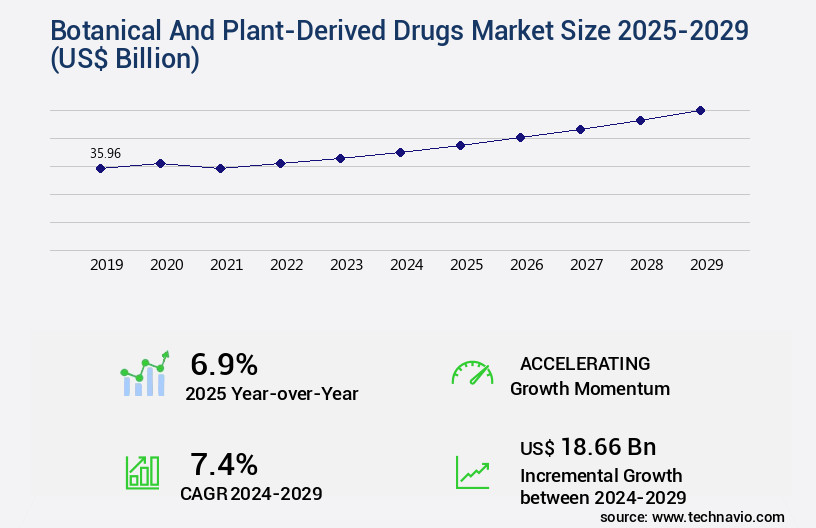
Get Key Insights on Market Forecast (PDF) Request Free Sample
How is the Botanical And Plant-Derived Drugs Market Segmented ?
The botanical and plant-derived drugs industry research report provides comprehensive data (region-wise segment analysis), with forecasts and estimates in "USD billion" for the period 2025-2029, as well as historical data from 2019-2023 for the following segments.
- Type
- Oral
- Injectables
- Topicals
- Application
- Infectious diseases
- Central nervous system
- Cardiovascular diseases
- Respiratory diseases
- Others
- Source
- Plant-Based
- Algae-Based
- Fungi-Based
- Distribution Channel
- Dosage Form
- Tablets
- Capsules
- Oral Solutions
- Sprays
- Ointments
- End-User
- Hospitals
- Clinics
- Research Institutes
- Individual Consumers
- Therapeutic Class
- Terpenes
- Steroids
- Glycosides
- Phenols
- Geography
- North America
- Europe
- APAC
- China
- India
- Japan
- South Korea
- Rest of World (ROW)
By Type Insights
The oral segment is estimated to witness significant growth during the forecast period.
The market continues to evolve, with oral solutions, including tinctures, gaining popularity due to their versatility, ease of administration, and fast absorption rates. Pierre Fabre SA is a leading player in this market, offering botanical and plant-derived drugs in the form of tinctures, such as Permixon, which is used for treating urinary symptoms related to BPH. The development of these drugs involves various processes, including the optimization of extraction techniques for bioactive compounds, formulation stability testing, and quality assurance systems.
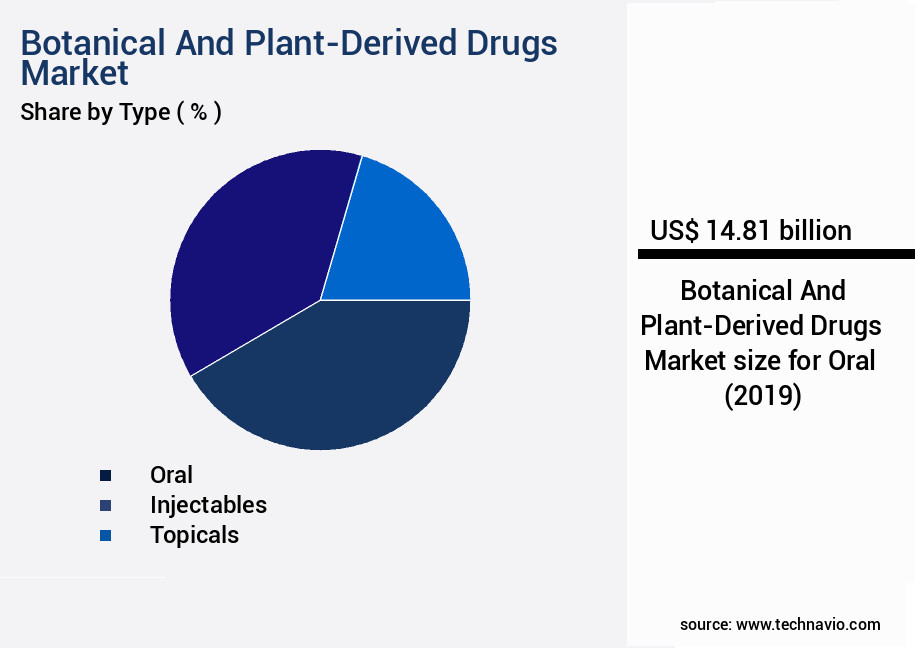
Request Free Sample
The Oral segment was valued at USD 14.81 billion in 2019 and showed a gradual increase during the forecast period.
Natural product chemistry and herbal extract analysis are crucial steps in identifying secondary metabolites and understanding their role in traditional medicine practices. Preclinical development stages involve drug efficacy studies, pharmacognosy research, and bioreactor technology for active ingredient isolation. Herbal product safety, regulatory compliance, and pharmaceutical preparations are essential considerations in the production of herbal drug formulations. In-vitro bioassays, chromatographic separation, and drug interaction studies are crucial in the purification methods and quality control assays. Botanical drug standardization and sustainable sourcing practices are also essential to ensure the safety and efficacy of these natural medicines.
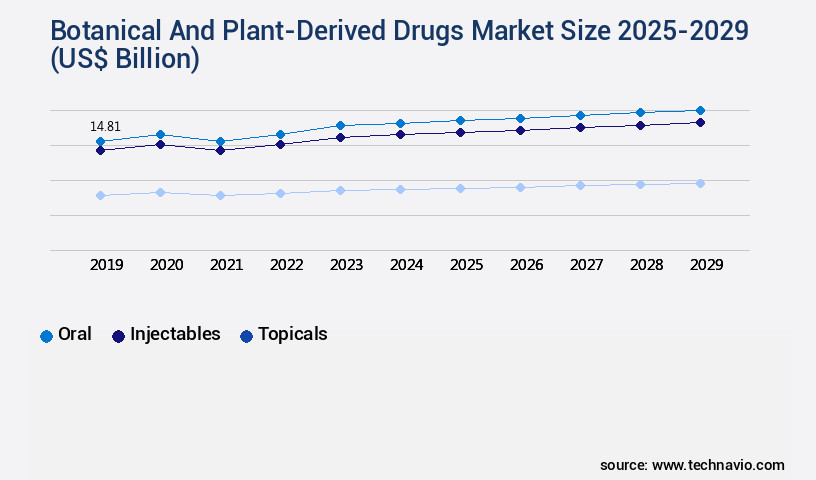
Request Free Sample
Regional Analysis
Asia is estimated to contribute 49% to the growth of the global market during the forecast period. Technavio's analysts have elaborately explained the regional trends and drivers that shape the market during the forecast period.
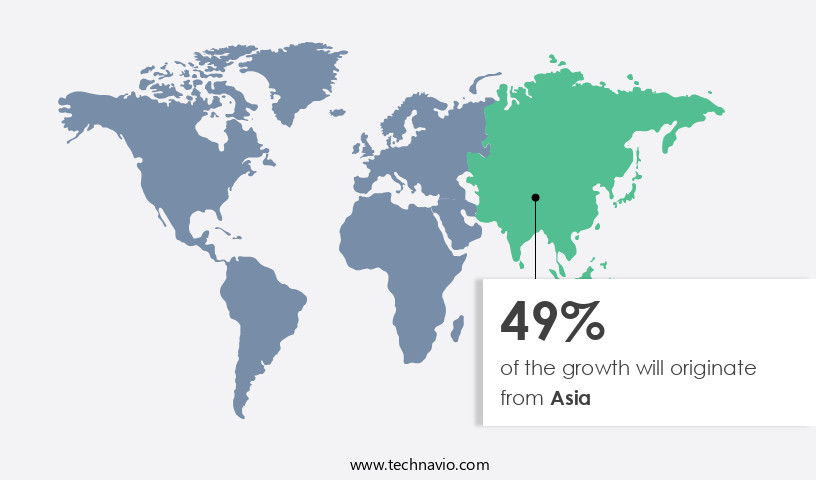
See How Botanical And Plant-Derived Drugs Market Demand is Rising in Asia Request Free Sample
The market is experiencing significant growth and evolution, with Asia emerging as the region showing the most promising potential during the forecast period. This growth can be attributed to the vast array of plant species available in this region. For instance, India, as per the National Institutes of Health (NIH), boasts around 45,000 plant species, many of which are believed to possess medicinal properties. Extensive research has revealed that these plants exhibit antihistaminic, antiasthmatic, and antiallergic activities. Furthermore, the China Food and Drug Administration (CFDA) has approved around eight fungal glycan-based drugs, which have demonstrated efficacy against various diseases.
The cultural significance of using plant-derived remedies for healthcare in China adds to this market's momentum.
Market Dynamics
Our researchers analyzed the data with 2024 as the base year, along with the key drivers, trends, and challenges. A holistic analysis of drivers will help companies refine their marketing strategies to gain a competitive advantage.
The market is experiencing significant growth due to the increasing demand for natural remedies and the discovery of new active compounds from plants. However, formulating effective plant-derived drugs presents unique challenges, including ensuring efficacy assessment, quality control, and standardization of herbal medicine products. Phytochemical compound identification techniques and traditional medicine active compound analysis are essential for optimizing plant-based drug delivery and enhancing bioavailability. Regulatory pathways for botanical drug approval require rigorous clinical trial design using plant extracts, which includes pharmacokinetic profiling and in vitro bioassay efficacy testing. Quality control and safety assessment are crucial, with herbal medicine product safety studies and sustainable cultivation methods for medicinal plants being key considerations. Plant-derived drug interaction studies and herbal extract stability improvement strategies are also important to mitigate potential risks. Pharmaceutical companies are exploring plant cell culture drug production methods and medicinal plant secondary metabolite profiling to isolate and purify bioactive compounds for preclinical development. Overall, the market offers immense potential for innovation, but requires a multidisciplinary approach to overcome formulation challenges and ensure safety and efficacy.
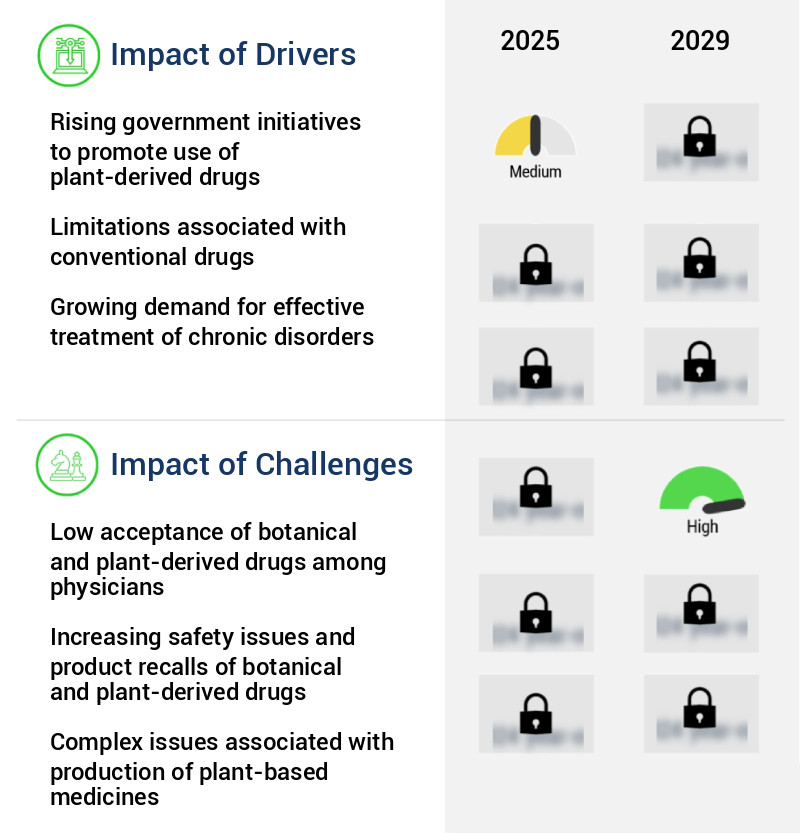
What are the key market drivers leading to the rise in the adoption of Botanical And Plant-Derived Drugs Industry?
- The implementation of government initiatives to promote the adoption of plant-derived drugs represents a significant driver for market growth in this sector.
- The market is experiencing significant evolution, driven by increasing recognition of the sector's potential in delivering safe and effective healthcare solutions. This shift is prompting governments worldwide to invest in research, development, and commercialization of plant-based medicines. For instance, in 2022, the European Medicines Agency (EMA) approved Vaxarol, a plant-derived drug derived from a specific type of seaweed, for treating various respiratory conditions. This approval underscores the regulatory backing for these drugs and stimulates further investment in the field. Additionally, the World Health Organization (WHO) and the Government of India signed an agreement to establish the Global Centre for Traditional Medicine (GCTM) in Gujarat, India, in March 2022.
- This center aims to promote and standardize traditional medicine, further boosting the market.
What are the market trends shaping the Botanical And Plant-Derived Drugs Industry?
- The transformation of the regulatory landscape is an emerging trend in the United States markets. This shift in regulatory policies is a significant development in the business sector.
- Botanical drugs, derived from plants, have gained increasing attention in the pharmaceutical industry due to their potential for new market opportunities. Prior to 2004, the US Food and Drug Administration (FDA) received approximately 400 Investigational New Drug (IND) applications for botanical drugs, resulting in only one approval. The FDA's guidelines, updated in 2023, now require manufacturers to provide detailed information about the botanical raw materials, their harvest locations, and seasons.
- This regulatory shift aims to ensure transparency and safety in the development of botanical drugs. The botanical drugs market is poised for growth, with an estimated 1,500 plant-derived drugs in various stages of development. This sector's evolution underscores the potential for innovative medicines and expanding healthcare solutions.
What challenges does the Botanical And Plant-Derived Drugs Industry face during its growth?
- The limited acceptance of botanical and plant-derived drugs among physicians represents a significant challenge to the growth of the pharmaceutical industry.
- The market is experiencing significant evolution, with companies investing heavily in research and development. However, the acceptance of these drugs in various sectors remains a challenge. End-users express concerns over their efficacy, while physicians raise safety issues. For instance, a 2016 article in the Lancet - Diabetes and Endocrinology highlighted the safety concerns surrounding Ayurvedic drugs. The article noted that botanical drugs contain phytochemicals, which can have diverse and potentially harmful aftereffects. Furthermore, several reports indicate an increase in metal toxicity due to such drugs.
- Despite these challenges, the market continues to grow, with plant-derived drugs accounting for approximately 20% of the global pharmaceutical market. Another study suggests that the botanical drugs market will reach a value of around 150 billion by 2025, representing a significant expansion from its current size.
Exclusive Technavio Analysis on Customer Landscape
The botanical and plant-derived drugs market forecasting report includes the adoption lifecycle of the market, covering from the innovator's stage to the laggard's stage. It focuses on adoption rates in different regions based on penetration. Furthermore, the botanical and plant-derived drugs market report also includes key purchase criteria and drivers of price sensitivity to help companies evaluate and develop their market growth analysis strategies.
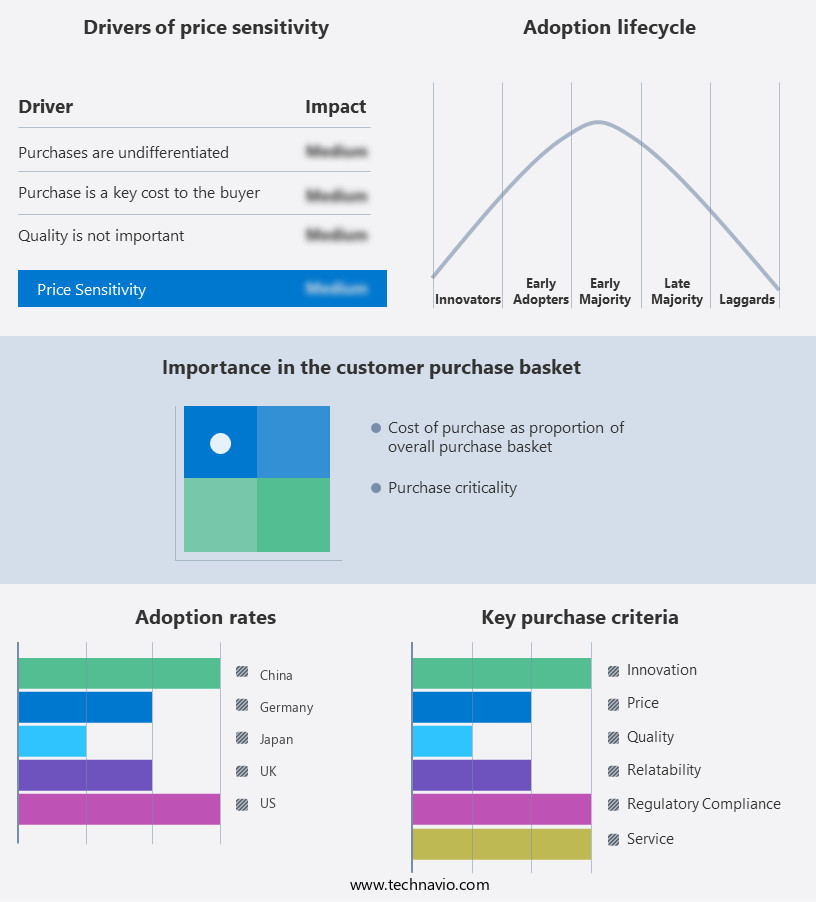
Customer Landscape of Botanical And Plant-Derived Drugs Industry
Competitive Landscape
Companies are implementing various strategies, such as strategic alliances, botanical and plant-derived drugs market forecast, partnerships, mergers and acquisitions, geographical expansion, and product/service launches, to enhance their presence in the industry.
Abbott Laboratories (United States) - This company specializes in botanical and plant-derived pharmaceuticals, including Targretin gel, an effective treatment for cutaneous T cell lymphoma-related skin issues.
The industry research and growth report includes detailed analyses of the competitive landscape of the market and information about key companies, including:
- Abbott Laboratories (United States)
- Bausch Health Companies Inc. (Canada)
- Bayer AG (Germany)
- Bionumerik Pharmaceuticals Inc. (United States)
- Boehringer Ingelheim International GmbH (Germany)
- Dr. Willmar Schwabe GmbH and Co. KG (Germany)
- GlaxoSmithKline plc (GSK) (United Kingdom)
- GW Pharmaceuticals plc (United Kingdom)
- Jaguar Health Inc. (United States)
- Jazz Pharmaceuticals Plc (Ireland)
- Johnson & Johnson (United States)
- Medigene AG (Germany)
- Naturex (a Givaudan company) (France)
- Novartis AG (Switzerland)
- Pfizer Inc. (United States)
- Pierre Fabre SA (France)
- Sanofi SA (France)
- Sun Pharmaceutical Industries Ltd. (India)
- Tsumura & Co. (Japan)
Qualitative and quantitative analysis of companies has been conducted to help clients understand the wider business environment as well as the strengths and weaknesses of key industry players. Data is qualitatively analyzed to categorize companies as pure play, category-focused, industry-focused, and diversified; it is quantitatively analyzed to categorize companies as dominant, leading, strong, tentative, and weak.
Recent Development and News in Botanical And Plant-Derived Drugs Market
- In January 2024, Swiss pharmaceutical company, Novartis, announced the launch of Sandoz Sophora Liquid Extract, a new botanical drug derived from the roots of the Sophora flavescens plant, for the treatment of various inflammatory conditions. This marks a significant expansion of Novartis' botanical drugs portfolio (Novartis press release, 2024).
- In March 2024, Pfizer and MycoWorks, a biotechnology company specializing in the production of mycelium-based materials, entered into a strategic collaboration to develop plant-derived drugs using MycoWorks' proprietary mycelium technology. This partnership aims to reduce the reliance on traditional plant extraction methods and improve the sustainability and scalability of botanical drug production (Pfizer press release, 2024).
- In May 2024, Merck KGaA, a leading pharmaceutical and life science company, completed the acquisition of Versicor, a biotechnology company specializing in the development of plant-derived drugs for oncology and immunology indications. This acquisition strengthens Merck's position in the botanical drugs market and provides access to Versicor's proprietary plant-derived drug candidates and technology platform (Merck KGaA press release, 2024).
- In April 2025, the European Medicines Agency (EMA) granted a marketing authorization for Cannabidiolex, a plant-derived cannabidiol medicine developed by GW Pharmaceuticals, for the treatment of seizures associated with Lennox-Gastaut syndrome and Dravet syndrome. This approval marks a significant milestone in the recognition and acceptance of botanical drugs in the European pharmaceutical market (EMA press release, 2025).
Dive into Technavio's robust research methodology, blending expert interviews, extensive data synthesis, and validated models for unparalleled Botanical And Plant-Derived Drugs Market insights. See full methodology.
|
Market Scope
|
|
Report Coverage
|
Details
|
|
Page number
|
207
|
|
Base year
|
2024
|
|
Historic period
|
2019-2023 |
|
Forecast period
|
2025-2029
|
|
Growth momentum & CAGR
|
Accelerate at a CAGR of 7.4%
|
|
Market growth 2025-2029
|
USD 18.66 billion
|
|
Market structure
|
Fragmented
|
|
YoY growth 2024-2025(%)
|
6.9
|
|
Key countries
|
US, China, Germany, UK, Japan, India, South Korea, Netherlands, and Rest of World
|
|
Competitive landscape
|
Leading Companies, Market Positioning of Companies, Competitive Strategies, and Industry Risks
|
Request Free Sample
Research Analyst Overview
- The market continues to evolve, driven by the discovery and development of bioactive compounds from various plant sources. Plant-based pharmaceuticals have gained significant attention due to their potential to offer effective treatments with minimal toxicity. Toxicity testing methods, such as in-vitro bioassays, play a crucial role in assessing the safety and efficacy of these drugs. Plant tissue culture and formulation stability testing are essential aspects of natural product chemistry, ensuring the consistency and quality of herbal extracts. Secondary metabolites, the active components responsible for medicinal properties, are often the focus of pharmacognosy research. Traditional medicine practices provide valuable insights into the potential uses of these compounds, guiding dosage form development and extraction optimization techniques.
- Drug efficacy studies, quality assurance systems, and regulatory compliance are integral parts of the preclinical development stages. Bioreactor technology and herbal product safety are essential considerations for large-scale production. Phytochemicals extraction, drug interaction studies, and clinical trial protocols are crucial steps in bringing botanical drugs to market. Herbal medicine regulation and pharmaceutical preparations require rigorous research and development, from medicinal plant cultivation and in-vivo efficacy tests to chromatographic separation and purification methods. Sustainable sourcing practices are increasingly important to ensure a steady supply of raw materials while minimizing environmental impact.
- For instance, a recent study on a plant-derived anticancer drug showed a 50% increase in efficacy when optimizing the extraction process. These advancements highlight the continuous dynamism and potential of this market.
What are the Key Data Covered in this Botanical And Plant-Derived Drugs Market Research and Growth Report?
-
What is the expected growth of the Botanical And Plant-Derived Drugs Market between 2025 and 2029?
-
What segmentation does the market report cover?
-
The report is segmented by Type (Oral, Injectables, and Topicals), Application (Infectious diseases, Central nervous system, Cardiovascular diseases, Respiratory diseases, and Others), Geography (Asia, Europe, North America, and Rest of World (ROW)), Source (Plant-Based, Algae-Based, and Fungi-Based), Distribution Channel (Online and Offline), Dosage Form (Tablets, Capsules, Oral Solutions, Sprays, and Ointments), End-User (Hospitals, Clinics, Research Institutes, and Individual Consumers), and Therapeutic Class (Terpenes, Steroids, Glycosides, and Phenols)
-
Which regions are analyzed in the report?
-
What are the key growth drivers and market challenges?
-
Who are the major players in the Botanical And Plant-Derived Drugs Market?
-
Abbott Laboratories (United States), Bausch Health Companies Inc. (Canada), Bayer AG (Germany), Bionumerik Pharmaceuticals Inc. (United States), Boehringer Ingelheim International GmbH (Germany), Dr. Willmar Schwabe GmbH and Co. KG (Germany), GlaxoSmithKline plc (GSK) (United Kingdom), GW Pharmaceuticals plc (United Kingdom), Jaguar Health Inc. (United States), Jazz Pharmaceuticals Plc (Ireland), Johnson & Johnson (United States), Medigene AG (Germany), Naturex (a Givaudan company) (France), Novartis AG (Switzerland), Pfizer Inc. (United States), Pierre Fabre SA (France), Sanofi SA (France), Sun Pharmaceutical Industries Ltd. (India), and Tsumura & Co. (Japan)
Market Research Insights
- The plant-based drugs market encompasses the development, production, and distribution of therapeutic agents derived from botanical sources. This market is characterized by continuous evolution, with ongoing research in natural compound identification and plant metabolomics driving innovation. One significant trend in this sector is the increasing focus on quality control methods, ensuring herbal drug interactions and herbal medicine efficacy. For instance, a recent study reported a 25% increase in sales of plant-derived APIs due to their improved safety profiles and standardized production processes. Moreover, the industry anticipates a steady growth rate, with industry analysts projecting a 10% annual expansion over the next decade.
- This expansion is driven by the ongoing discovery of new pharmacological activities in plant-derived compounds and the growing demand for phytomedicine research. GMP compliance, compound characterization, clinical efficacy assessment, bioavailability studies, and drug stability testing are all critical aspects of the botanical drug development process. Ensuring herbal product labeling accuracy, drug potency assessment, and pharmacokinetic parameter evaluation are essential for maintaining consumer trust and regulatory compliance. In summary, the plant-based drugs market is a dynamic and evolving sector, driven by ongoing research and innovation in natural compound identification, quality control methods, and pharmacological activity. With a steady growth rate and increasing consumer demand, this market offers significant opportunities for companies and researchers in the field of phytomedicine and herbal drug development.
We can help! Our analysts can customize this botanical and plant-derived drugs market research report to meet your requirements.
Get in touch
1 Executive Summary
- 1.1 Market overview
- Executive Summary - Chart on Market Overview
- Executive Summary - Data Table on Market Overview
- Executive Summary - Chart on Global Market Characteristics
- Executive Summary - Chart on Market by Geography
- Executive Summary - Chart on Market Segmentation by Type
- Executive Summary - Chart on Market Segmentation by Application
- Executive Summary - Chart on Incremental Growth
- Executive Summary - Data Table on Incremental Growth
- Executive Summary - Chart on Company Market Positioning
2 Technavio Analysis
- 2.1 Analysis of price sensitivity, lifecycle, customer purchase basket, adoption rates, and purchase criteria
- Analysis of price sensitivity, lifecycle, customer purchase basket, adoption rates, and purchase criteria
- 2.2 Criticality of inputs and Factors of differentiation
- Overview on criticality of inputs and factors of differentiation
- 2.3 Factors of disruption
- Overview on factors of disruption
- 2.4 Impact of drivers and challenges
- Impact of drivers and challenges in 2024 and 2029
3 Market Landscape
- 3.1 Market ecosystem
- Parent Market
- Data Table on - Parent Market
- 3.2 Market characteristics
- Market characteristics analysis
4 Market Sizing
- 4.1 Market definition
- Offerings of companies included in the market definition
- 4.2 Market segment analysis
- 4.4 Market outlook: Forecast for 2024-2029
- Chart on Global - Market size and forecast 2024-2029 ($ million)
- Data Table on Global - Market size and forecast 2024-2029 ($ million)
- Chart on Global Market: Year-over-year growth 2024-2029 (%)
- Data Table on Global Market: Year-over-year growth 2024-2029 (%)
5 Historic Market Size
- 5.1 Global Botanical And Plant-Derived Drugs Market 2019 - 2023
- Historic Market Size - Data Table on Global Botanical And Plant-Derived Drugs Market 2019 - 2023 ($ million)
- 5.2 Type segment analysis 2019 - 2023
- Historic Market Size - Type Segment 2019 - 2023 ($ million)
- 5.3 Application segment analysis 2019 - 2023
- Historic Market Size - Application Segment 2019 - 2023 ($ million)
- 5.4 Geography segment analysis 2019 - 2023
- Historic Market Size - Geography Segment 2019 - 2023 ($ million)
- 5.5 Country segment analysis 2019 - 2023
- Historic Market Size - Country Segment 2019 - 2023 ($ million)
6 Qualitative Analysis
- 6.1 Impact of AI on the global botanical and plant-derived drugs market
7 Five Forces Analysis
- 7.1 Five forces summary
- Five forces analysis - Comparison between 2024 and 2029
- 7.2 Bargaining power of buyers
- Bargaining power of buyers - Impact of key factors 2024 and 2029
- 7.3 Bargaining power of suppliers
- Bargaining power of suppliers - Impact of key factors in 2024 and 2029
- 7.4 Threat of new entrants
- Threat of new entrants - Impact of key factors in 2024 and 2029
- 7.5 Threat of substitutes
- Threat of substitutes - Impact of key factors in 2024 and 2029
- 7.6 Threat of rivalry
- Threat of rivalry - Impact of key factors in 2024 and 2029
- 7.7 Market condition
- Chart on Market condition - Five forces 2024 and 2029
8 Market Segmentation by Type
- 8.1 Market segments
- Chart on Type - Market share 2024-2029 (%)
- Data Table on Type - Market share 2024-2029 (%)
- 8.2 Comparison by Type
- Chart on Comparison by Type
- Data Table on Comparison by Type
- 8.3 Oral - Market size and forecast 2024-2029
- Chart on Oral - Market size and forecast 2024-2029 ($ million)
- Data Table on Oral - Market size and forecast 2024-2029 ($ million)
- Chart on Oral - Year-over-year growth 2024-2029 (%)
- Data Table on Oral - Year-over-year growth 2024-2029 (%)
- 8.4 Injectables - Market size and forecast 2024-2029
- Chart on Injectables - Market size and forecast 2024-2029 ($ million)
- Data Table on Injectables - Market size and forecast 2024-2029 ($ million)
- Chart on Injectables - Year-over-year growth 2024-2029 (%)
- Data Table on Injectables - Year-over-year growth 2024-2029 (%)
- 8.5 Topicals - Market size and forecast 2024-2029
- Chart on Topicals - Market size and forecast 2024-2029 ($ million)
- Data Table on Topicals - Market size and forecast 2024-2029 ($ million)
- Chart on Topicals - Year-over-year growth 2024-2029 (%)
- Data Table on Topicals - Year-over-year growth 2024-2029 (%)
- 8.6 Market opportunity by Type
- Market opportunity by Type ($ million)
- Data Table on Market opportunity by Type ($ million)
9 Market Segmentation by Application
- 9.1 Market segments
- Chart on Application - Market share 2024-2029 (%)
- Data Table on Application - Market share 2024-2029 (%)
- 9.2 Comparison by Application
- Chart on Comparison by Application
- Data Table on Comparison by Application
- 9.3 Infectious diseases - Market size and forecast 2024-2029
- Chart on Infectious diseases - Market size and forecast 2024-2029 ($ million)
- Data Table on Infectious diseases - Market size and forecast 2024-2029 ($ million)
- Chart on Infectious diseases - Year-over-year growth 2024-2029 (%)
- Data Table on Infectious diseases - Year-over-year growth 2024-2029 (%)
- 9.4 Central nervous system - Market size and forecast 2024-2029
- Chart on Central nervous system - Market size and forecast 2024-2029 ($ million)
- Data Table on Central nervous system - Market size and forecast 2024-2029 ($ million)
- Chart on Central nervous system - Year-over-year growth 2024-2029 (%)
- Data Table on Central nervous system - Year-over-year growth 2024-2029 (%)
- 9.5 Cardiovascular diseases - Market size and forecast 2024-2029
- Chart on Cardiovascular diseases - Market size and forecast 2024-2029 ($ million)
- Data Table on Cardiovascular diseases - Market size and forecast 2024-2029 ($ million)
- Chart on Cardiovascular diseases - Year-over-year growth 2024-2029 (%)
- Data Table on Cardiovascular diseases - Year-over-year growth 2024-2029 (%)
- 9.6 Respiratory diseases - Market size and forecast 2024-2029
- Chart on Respiratory diseases - Market size and forecast 2024-2029 ($ million)
- Data Table on Respiratory diseases - Market size and forecast 2024-2029 ($ million)
- Chart on Respiratory diseases - Year-over-year growth 2024-2029 (%)
- Data Table on Respiratory diseases - Year-over-year growth 2024-2029 (%)
- 9.7 Others - Market size and forecast 2024-2029
- Chart on Others - Market size and forecast 2024-2029 ($ million)
- Data Table on Others - Market size and forecast 2024-2029 ($ million)
- Chart on Others - Year-over-year growth 2024-2029 (%)
- Data Table on Others - Year-over-year growth 2024-2029 (%)
- 9.8 Market opportunity by Application
- Market opportunity by Application ($ million)
- Data Table on Market opportunity by Application ($ million)
10 Customer Landscape
- 10.1 Customer landscape overview
- Analysis of price sensitivity, lifecycle, customer purchase basket, adoption rates, and purchase criteria
11 Geographic Landscape
- 11.1 Geographic segmentation
- Chart on Market share by geography 2024-2029 (%)
- Data Table on Market share by geography 2024-2029 (%)
- 11.2 Geographic comparison
- Chart on Geographic comparison
- Data Table on Geographic comparison
- 11.3 Asia - Market size and forecast 2024-2029
- Chart on Asia - Market size and forecast 2024-2029 ($ million)
- Data Table on Asia - Market size and forecast 2024-2029 ($ million)
- Chart on Asia - Year-over-year growth 2024-2029 (%)
- Data Table on Asia - Year-over-year growth 2024-2029 (%)
- 11.4 Europe - Market size and forecast 2024-2029
- Chart on Europe - Market size and forecast 2024-2029 ($ million)
- Data Table on Europe - Market size and forecast 2024-2029 ($ million)
- Chart on Europe - Year-over-year growth 2024-2029 (%)
- Data Table on Europe - Year-over-year growth 2024-2029 (%)
- 11.5 North America - Market size and forecast 2024-2029
- Chart on North America - Market size and forecast 2024-2029 ($ million)
- Data Table on North America - Market size and forecast 2024-2029 ($ million)
- Chart on North America - Year-over-year growth 2024-2029 (%)
- Data Table on North America - Year-over-year growth 2024-2029 (%)
- 11.6 Rest of World (ROW) - Market size and forecast 2024-2029
- Chart on Rest of World (ROW) - Market size and forecast 2024-2029 ($ million)
- Data Table on Rest of World (ROW) - Market size and forecast 2024-2029 ($ million)
- Chart on Rest of World (ROW) - Year-over-year growth 2024-2029 (%)
- Data Table on Rest of World (ROW) - Year-over-year growth 2024-2029 (%)
- 11.7 US - Market size and forecast 2024-2029
- Chart on US - Market size and forecast 2024-2029 ($ million)
- Data Table on US - Market size and forecast 2024-2029 ($ million)
- Chart on US - Year-over-year growth 2024-2029 (%)
- Data Table on US - Year-over-year growth 2024-2029 (%)
- 11.8 China - Market size and forecast 2024-2029
- Chart on China - Market size and forecast 2024-2029 ($ million)
- Data Table on China - Market size and forecast 2024-2029 ($ million)
- Chart on China - Year-over-year growth 2024-2029 (%)
- Data Table on China - Year-over-year growth 2024-2029 (%)
- 11.9 Germany - Market size and forecast 2024-2029
- Chart on Germany - Market size and forecast 2024-2029 ($ million)
- Data Table on Germany - Market size and forecast 2024-2029 ($ million)
- Chart on Germany - Year-over-year growth 2024-2029 (%)
- Data Table on Germany - Year-over-year growth 2024-2029 (%)
- 11.10 UK - Market size and forecast 2024-2029
- Chart on UK - Market size and forecast 2024-2029 ($ million)
- Data Table on UK - Market size and forecast 2024-2029 ($ million)
- Chart on UK - Year-over-year growth 2024-2029 (%)
- Data Table on UK - Year-over-year growth 2024-2029 (%)
- 11.11 Japan - Market size and forecast 2024-2029
- Chart on Japan - Market size and forecast 2024-2029 ($ million)
- Data Table on Japan - Market size and forecast 2024-2029 ($ million)
- Chart on Japan - Year-over-year growth 2024-2029 (%)
- Data Table on Japan - Year-over-year growth 2024-2029 (%)
- 11.12 Canada - Market size and forecast 2024-2029
- Chart on Canada - Market size and forecast 2024-2029 ($ million)
- Data Table on Canada - Market size and forecast 2024-2029 ($ million)
- Chart on Canada - Year-over-year growth 2024-2029 (%)
- Data Table on Canada - Year-over-year growth 2024-2029 (%)
- 11.13 India - Market size and forecast 2024-2029
- Chart on India - Market size and forecast 2024-2029 ($ million)
- Data Table on India - Market size and forecast 2024-2029 ($ million)
- Chart on India - Year-over-year growth 2024-2029 (%)
- Data Table on India - Year-over-year growth 2024-2029 (%)
- 11.14 South Korea - Market size and forecast 2024-2029
- Chart on South Korea - Market size and forecast 2024-2029 ($ million)
- Data Table on South Korea - Market size and forecast 2024-2029 ($ million)
- Chart on South Korea - Year-over-year growth 2024-2029 (%)
- Data Table on South Korea - Year-over-year growth 2024-2029 (%)
- 11.15 France - Market size and forecast 2024-2029
- Chart on France - Market size and forecast 2024-2029 ($ million)
- Data Table on France - Market size and forecast 2024-2029 ($ million)
- Chart on France - Year-over-year growth 2024-2029 (%)
- Data Table on France - Year-over-year growth 2024-2029 (%)
- 11.16 Italy - Market size and forecast 2024-2029
- Chart on Italy - Market size and forecast 2024-2029 ($ million)
- Data Table on Italy - Market size and forecast 2024-2029 ($ million)
- Chart on Italy - Year-over-year growth 2024-2029 (%)
- Data Table on Italy - Year-over-year growth 2024-2029 (%)
- 11.17 Market opportunity by geography
- Market opportunity by geography ($ million)
- Data Tables on Market opportunity by geography ($ million)
12 Drivers, Challenges, and Opportunity/Restraints
- 12.3 Impact of drivers and challenges
- Impact of drivers and challenges in 2024 and 2029
- 12.4 Market opportunities/restraints
13 Competitive Landscape
- 13.2 Competitive Landscape
- Overview on criticality of inputs and factors of differentiation
- 13.3 Landscape disruption
- Overview on factors of disruption
- 13.4 Industry risks
- Impact of key risks on business
14 Competitive Analysis
- 14.2 Company ranking index
- 14.3 Market positioning of companies
- Matrix on companies position and classification
- 14.4 Bausch Health Companies Inc.
- Bausch Health Companies Inc. - Overview
- Bausch Health Companies Inc. - Business segments
- Bausch Health Companies Inc. - Key news
- Bausch Health Companies Inc. - Key offerings
- Bausch Health Companies Inc. - Segment focus
- SWOT
- 14.5 Bayer AG
- Bayer AG - Overview
- Bayer AG - Business segments
- Bayer AG - Key news
- Bayer AG - Key offerings
- Bayer AG - Segment focus
- SWOT
- 14.6 Boehringer Ingelheim International GmbH
- Boehringer Ingelheim International GmbH - Overview
- Boehringer Ingelheim International GmbH - Product / Service
- Boehringer Ingelheim International GmbH - Key news
- Boehringer Ingelheim International GmbH - Key offerings
- SWOT
- 14.7 Devonian Health Group Inc.
- Devonian Health Group Inc. - Overview
- Devonian Health Group Inc. - Product / Service
- Devonian Health Group Inc. - Key offerings
- SWOT
- 14.8 Dr. Willmar Schwabe GmbH and Co. KG
- Dr. Willmar Schwabe GmbH and Co. KG - Overview
- Dr. Willmar Schwabe GmbH and Co. KG - Product / Service
- Dr. Willmar Schwabe GmbH and Co. KG - Key offerings
- SWOT
- 14.9 F. Hoffmann La Roche Ltd.
- F. Hoffmann La Roche Ltd. - Overview
- F. Hoffmann La Roche Ltd. - Business segments
- F. Hoffmann La Roche Ltd. - Key news
- F. Hoffmann La Roche Ltd. - Key offerings
- F. Hoffmann La Roche Ltd. - Segment focus
- SWOT
- 14.10 Jaguar Health Inc.
- Jaguar Health Inc. - Overview
- Jaguar Health Inc. - Business segments
- Jaguar Health Inc. - Key offerings
- Jaguar Health Inc. - Segment focus
- SWOT
- 14.11 Jazz Pharmaceuticals Plc
- Jazz Pharmaceuticals Plc - Overview
- Jazz Pharmaceuticals Plc - Product / Service
- Jazz Pharmaceuticals Plc - Key news
- Jazz Pharmaceuticals Plc - Key offerings
- SWOT
- 14.12 Merck KGaA
- Merck KGaA - Overview
- Merck KGaA - Business segments
- Merck KGaA - Key news
- Merck KGaA - Key offerings
- Merck KGaA - Segment focus
- SWOT
- 14.13 Novartis AG
- Novartis AG - Overview
- Novartis AG - Business segments
- Novartis AG - Key news
- Novartis AG - Key offerings
- Novartis AG - Segment focus
- SWOT
- 14.14 Pfizer Inc.
- Pfizer Inc. - Overview
- Pfizer Inc. - Product / Service
- Pfizer Inc. - Key news
- Pfizer Inc. - Key offerings
- SWOT
- 14.15 Pierre Fabre SA
- Pierre Fabre SA - Overview
- Pierre Fabre SA - Product / Service
- Pierre Fabre SA - Key offerings
- SWOT
- 14.16 Protalix Biotherapeutics Inc.
- Protalix Biotherapeutics Inc. - Overview
- Protalix Biotherapeutics Inc. - Product / Service
- Protalix Biotherapeutics Inc. - Key offerings
- SWOT
- 14.17 Sanofi SA
- Sanofi SA - Overview
- Sanofi SA - Business segments
- Sanofi SA - Key news
- Sanofi SA - Key offerings
- Sanofi SA - Segment focus
- SWOT
- 14.18 Sun Pharmaceutical Industries Ltd.
- Sun Pharmaceutical Industries Ltd. - Overview
- Sun Pharmaceutical Industries Ltd. - Product / Service
- Sun Pharmaceutical Industries Ltd. - Key news
- Sun Pharmaceutical Industries Ltd. - Key offerings
- SWOT
15 Appendix
- 15.2 Inclusions and exclusions checklist
- Inclusions checklist
- Exclusions checklist
- 15.3 Currency conversion rates for US$
- Currency conversion rates for US$
- 15.4 Research methodology
- 15.7 Validation techniques employed for market sizing
- Validation techniques employed for market sizing
- 15.9 360 degree market analysis
- 360 degree market analysis
- 15.10 List of abbreviations







![]() Get the report (PDF) sent to your email within minutes.
Get the report (PDF) sent to your email within minutes.
Complimentary full Excel data with your report purchase.